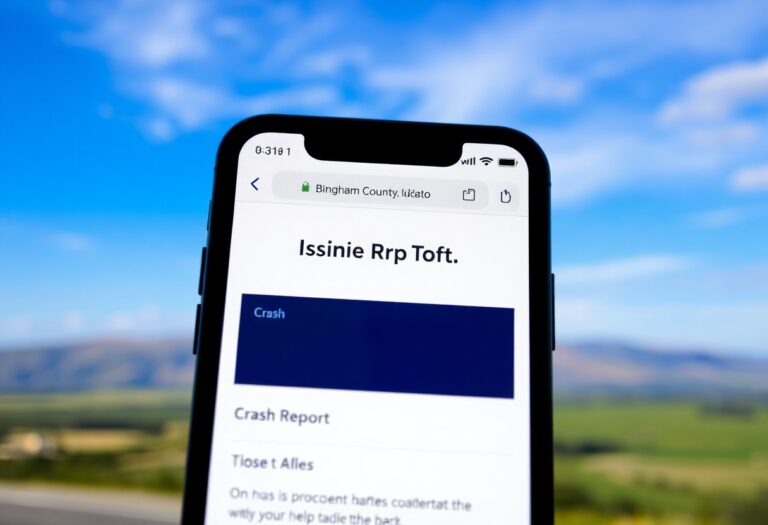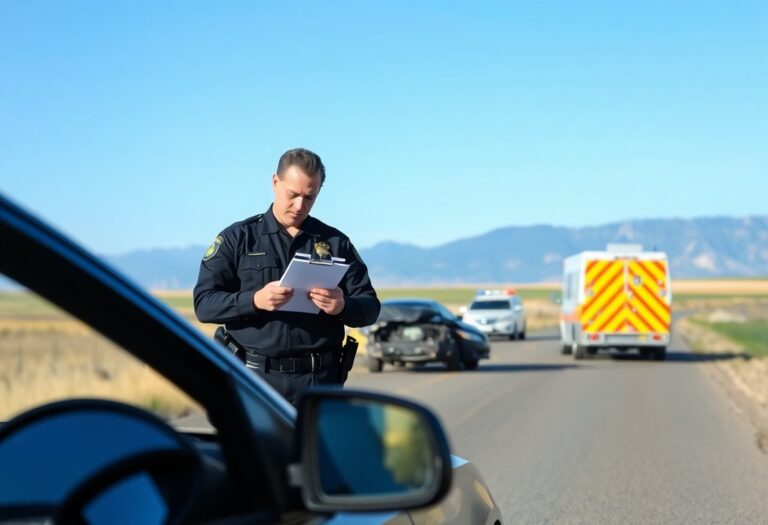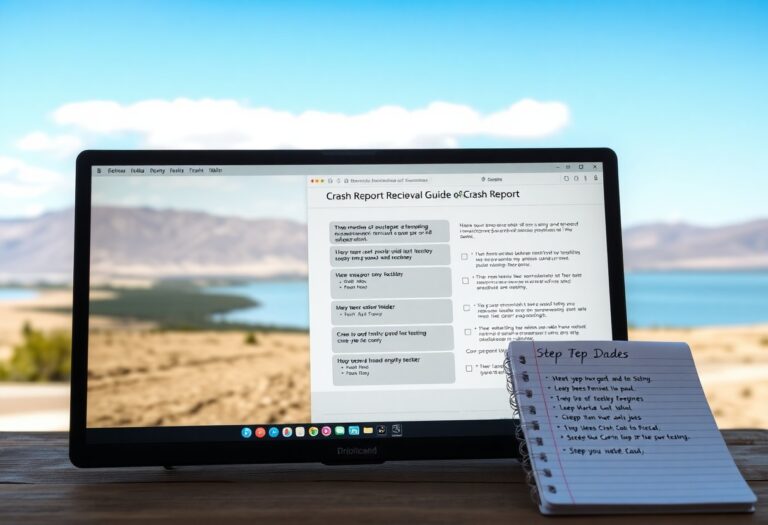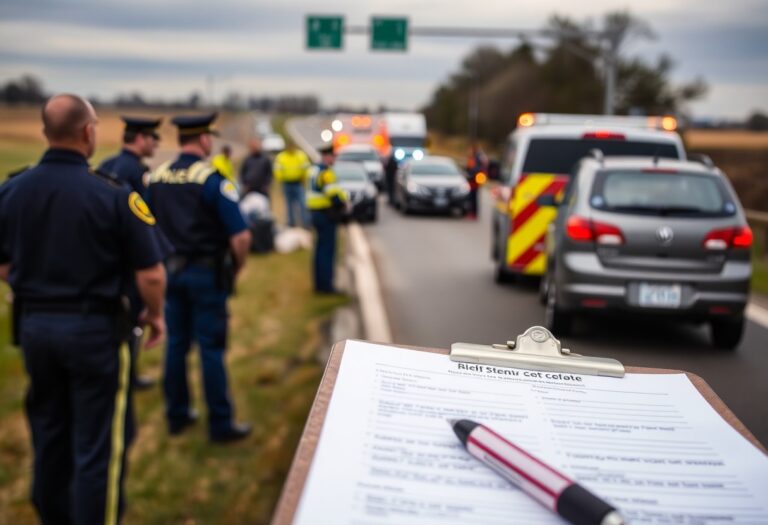Most Texas drivers will experience a car accident at some point, making it vital for you to understand how to obtain your car accident reports efficiently. In Williamson County, Texas, navigating the process can initially seem daunting, but it doesn’t have to be. By following a few simple steps, you can access important accident information quickly and easily, aiding in insurance claims and legal matters. This guide aims to simplify the process, putting you in control at a time when clarity is vital.
The Anatomy of a Car Accident Report in Williamson County
Understanding the structure of a car accident report simplifies the process of acquiring this vital document. Each report systematically documents critical details such as the date, time, and location of the accident, as well as the involved parties’ information and statements. Witness accounts and diagrams often accompany the narrative, painting a clearer picture for insurance companies and law enforcement. In Williamson County, this standardized format streamlines legal processes and promotes transparency in accident investigation.
Key Components Every Report Should Include
Every car accident report must contain fundamental components to be effective and comprehensive. Expect to see the names, addresses, and contact information of all drivers, passengers, and witnesses listed. Additionally, the report should detail the vehicle identification numbers (VIN) and license plate numbers of each vehicle. The accident location, weather conditions, and any apparent damages should also be clearly recorded. Each of these elements helps authorities piece together the incident and supports your case in potential disputes.
Understanding the Legal Terminology
Familiarizing yourself with the legal vocabulary in a car accident report can aid in deciphering its contents. Terms like “liability,” “negligence,” and “duty of care” are fundamental in assessing fault and determining compensation. Each term has specific implications that affect the outcomes of accident claims, making comprehension vital for navigating the legal landscape that follows an accident.
Legal terminology serves as the framework on which cases are built. For instance, “liability” refers to your financial responsibility for damages, while “negligence” means the failure to exercise reasonable care, potentially leading to accidents. Understanding these terms helps you better engage with your insurance provider and legal representatives, ensuring that you can advocate for your rights more effectively. Knowledge of legal jargon will also empower you to interpret your report and make informed decisions regarding your next steps after an accident.
Navigating the Reporting Process: A Step-by-Step Guide
Understanding the reporting process can streamline your experience after a car accident. Follow these steps to ensure you’re prepared and informed. Begin by assessing the situation for injuries and safety, then document the scene including photos and witness information. Next, report the accident to law enforcement and provide them with all relevant details. Finally, obtain your report through the appropriate channels. This guide will help you stay organized and efficient in a stressful situation.
| Steps for Reporting | Description |
| Assess the Scene | Check for injuries and prioritize safety before taking further action. |
| Document Evidence | Take photos and gather witness statements to create a clear record. |
| Contact Law Enforcement | File a report with local police, providing accurate details of the accident. |
| Obtain Your Report | Request a copy of the accident report through the appropriate agencies. |
Who Needs to File a Report and When
If your accident resulted in injuries, fatalities, or property damage exceeding $1,000, you must file a report with the Texas Department of Transportation (TxDOT). Texas law requires you to report these incidents within 10 days. Making this report not only fulfills legal obligations but also helps with potential insurance claims and legal follow-ups.
How to Obtain Copies of Your Report
To obtain a copy of your car accident report, you can visit the local law enforcement agency that handled your case, or access it through their respective websites. Most agencies allow you to request reports online, by mail, or in person, often for a small fee. Ensure you have your report number and personal identification ready to expedite the process.
For those opting to obtain the report online, you can simply navigate to the website of the agency that filed your report. You’ll need to fill in the necessary information such as your name, date of the accident, and report number, if available. Keep in mind that online requests may require payment via credit card. If you prefer a physical copy, consider visiting the agency in person along with your identification for immediate access to your report. Transparency and accessibility are priorities for law enforcement agencies, making the process easier for Texas drivers like you.
Decoding the Timeline: What Happens After Filing
After you file your car accident report, a clear timeline of events begins to unfold. You can expect law enforcement agencies to initiate their investigations, which typically include gathering evidence, interviewing witnesses, and documenting the scene. This process may take some time, and the completion of the report is necessary for determining liability and facilitating any insurance claims.
The Investigation Process Explained
The investigation process is thorough and aimed at collecting all relevant details surrounding the accident. Law enforcement officers will assess the scene, gather witness statements, and obtain photographs of the incident. In complex cases, they may also consult accident reconstruction specialists to ensure accuracy. This meticulous approach helps clarify the circumstances leading to the accident, leading to a more comprehensive report.
Typical Timeframes for Report Processing
Processing car accident reports in Williamson County usually spans several days to weeks. Factors such as the scope of the investigation, whether any injuries occurred, and the availability of evidence can influence the timeline. Generally, most reports are finalized within 10-14 days, although more complicated cases may take longer as law enforcement verifies information.
Achieving an accurate report in a timely manner relies heavily on the details surrounding your accident. For straightforward incidents without serious injuries, you can often expect a resolution within a week. However, if multiple stakeholders are involved or if negligence is under scrutiny, the process may extend significantly. Staying in touch with the department and reviewing your case status can help you gauge how long it might take to obtain your report.
The Consequences of Neglecting Accident Reports
Neglecting to file an accident report can lead to significant consequences, affecting both your legal standing and financial obligations. Without a formal report, you risk facing fines and legal penalties that could impact your driving record and insurance status. Moreover, the absence of documentation can complicate any liability discussions, ultimately leaving you vulnerable in disputes over fault.
Legal Ramifications for Failing to Report
Failing to report an accident may result in legal ramifications, including fines and potential misdemeanor charges. Texas law mandates that drivers involved in an accident resulting in injury, death, or property damage exceeding $1,000 must report it to the police. Ignoring these requirements can lead to added complications and liabilities in court, further complicating your situation.
Impact on Insurance Claims and Premiums
Insurance claims can be severely impacted if you do not file an accident report. Without official documentation, the insurance company may deny your claim, leaving you responsible for damages and medical expenses. Additionally, a lack of reporting can lead to increased premiums in the future as insurers perceive you as a higher risk.
When you fail to provide an accident report, insurers lack the necessary details to process your claim accurately. This often leads them to question the legitimacy of your claim or deny compensation altogether. Consequently, if you choose not to report an accident, you could see your premiums rise significantly when your insurer recalibrates your risk profile. In fact, drivers who frequently have claims denied or lack necessary documentation may face premiums increasing by as much as 20%. These factors underline the importance of filing a thorough accident report to ensure your coverage remains intact and that you protect your financial standing.
Leveraging Technology: Tools and Resources for Texas Drivers
Utilizing technology can significantly ease the process of accessing car accident reports and managing related documents. Texas drivers can take advantage of various tools designed to streamline these tasks, making navigation through the post-accident procedures faster and more efficient. By tapping into available resources, you can simplify your experience and stay informed about the necessary steps to take following an accident.
Utilizing Online Platforms for Report Access
Online platforms provide a convenient means to access your accident reports. Several Texas state websites, such as the Texas Department of Transportation (TxDOT), offer databases where you can search for and retrieve reports based on your specific incident information. This eliminates the need for time-consuming visits to local police stations, allowing you to acquire your documents from the comfort of your home.
Apps and Services to Streamline Accident Documentation
Various apps and online services are available to help you document accidents efficiently and effectively. Tools like Evernote or Accident Report Assistant enable you to collect photos, notes, and other information right at the accident scene. These apps often offer step-by-step guidance for capturing important details, such as witness contact information and insurance data, all in one accessible location.
Using apps designed for accident documentation not only aids in evidence collection but can also simplify communication with insurance companies. For example, Accident Report Assistant allows you to create detailed accident reports directly from your phone, including photos and GPS coordinates. This feature can save you time and frustration during the claims process, ensuring you have a clear record of the incident. With features like automatic backup to the cloud, you won’t have to worry about losing critical data during this stressful time.
Conclusion
Upon reflecting on the ease of accessing car accident reports in Williamson County, Texas, you can appreciate the streamlined process that benefits you as a driver. By utilizing available resources and understanding the necessary steps, you can obtain vital information quickly and efficiently. This knowledge not only aids in handling insurance claims but also enhances your overall driving experience. Staying informed empowers you to navigate the complexities of post-accident procedures with confidence.













